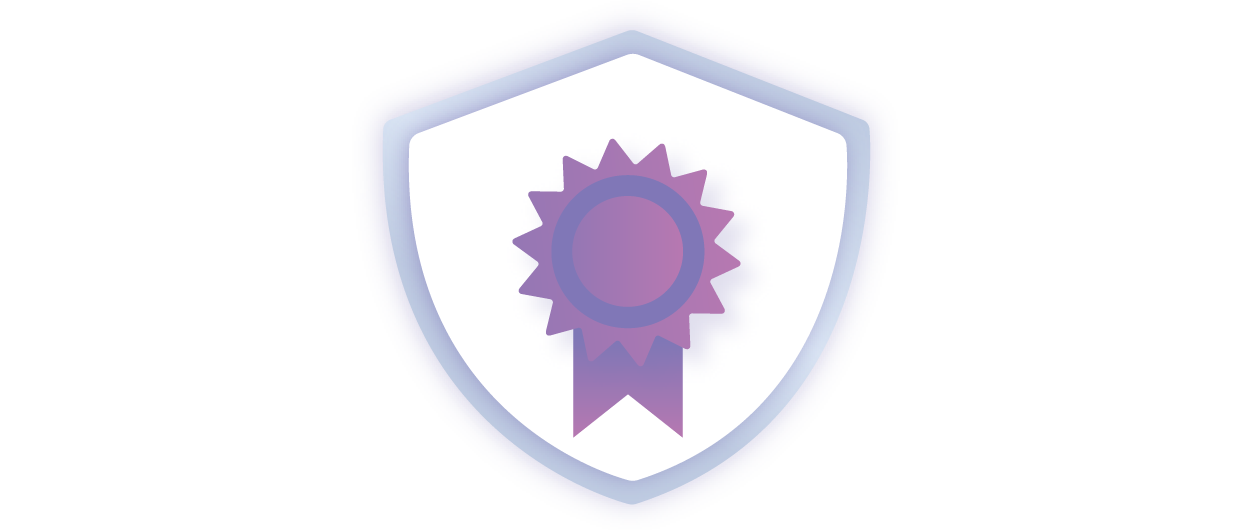Nokia CEO Rajeev Suri Keeps 5G Pressure on Euro Operators
 Suri also stated that in terms of costs, Nokia was “confident” in its ability to compete, and...
Suri also stated that in terms of costs, Nokia was “confident” in its ability to compete, and...
Cloudflare’s RPKI Toolkit

A few months ago, we made a first then a second announcement about Cloudflare’s involvement in Resource Public Key Infrastructure (RPKI), and our desire to make BGP Internet routing more secure. Our mission is to build a safer Internet. We want to make it easier for network operators to deploy RPKI.
Today’s article is going to cover our experience and the tools we are using. As a brief reminder, RPKI is a framework that allows networks to deploy route filtering using cryptography-validated information. Picture TLS certificates for IP addresses and Autonomous System Numbers (ASNs)
What it means for you:
We validate our IP routes. This means, as a 1.1.1.1 DNS resolver user, you are less likely to be victim of cache poisoning. We signed our IP routes. This means a user browsing the websites on Cloudflare’s network are unlikely to experience route hijacks.
All our Points of Presence which have a router compatible with The Resource Public Key Infrastructure (RPKI) to Router Protocol (RTR protocol) are connected to our custom software called GoRTR and are now filtering invalid routes. The deployment amounts to around 70% of our network.
We received many questions regarding the amount of invalid Continue reading
Cloudflare Registrar at three months


We announced Cloudflare Registrar in September. We launched the product by making it available in waves to our existing customers. During that time we gathered feedback and continued making improvements to the product while also adding more TLDs.
Staring today, we’re excited to make Cloudflare Registrar available to all of our customers. Cloudflare Registrar only charges you what we pay to the registry for your domain and any user can now rely on that at-cost pricing to manage their domain. As part of this announcement, we’d like to share some insights and data about domain registration that we learned during the early access period.
One-click DNS security makes a difference
When you launch your domain to the world, you rely on the Domain Name System (DNS) to direct your users to the address for your site. However, DNS cannot guarantee that your visitors reach your content because DNS, in its basic form, lacks authentication. If someone was able to poison the DNS responses for your site, they could hijack your visitors' DNS requests.
The Domain Name System Security Extensions (DNSSEC) can help prevent that type of attack by adding a chain of trust to DNS queries. When you enable DNSSEC Continue reading
SDxCentral’s Weekly Roundup — February 22, 2019
 Pivotal and Samsung join the O-RAN Alliance; Splunk withdraws from Russia; Microsoft expands its...
Pivotal and Samsung join the O-RAN Alliance; Splunk withdraws from Russia; Microsoft expands its...
Oracle, KPMG Cloud Threat Report Finds Confidence and Fear
 An Oracle and KPMG survey found 38 percent of professionals say the ability to detect and react to...
An Oracle and KPMG survey found 38 percent of professionals say the ability to detect and react to...
128 Technology Is Starting a Revolution for Secure SD-WAN, Networking
 Companies want simplicity and security, so “I don’t think building virtual networks on top of...
Companies want simplicity and security, so “I don’t think building virtual networks on top of...
Tenable, Forescout Both Merge Their IT and OT Security Platforms
 Preventing damaging intrusions to increasingly comingled IT and operational technology (OT) domains...
Preventing damaging intrusions to increasingly comingled IT and operational technology (OT) domains...
Cloudflare Access now supports RDP
Last fall, the United States FBI warned organizations of an increase in attacks that exploit vulnerabilities in the Remote Desktop Protocol (RDP). Attackers stole sensitive data and compromised networks by taking advantage of desktops left unprotected. Like legacy VPNs, RDP configurations made work outside of the office corporate network possible by opening a hole in it.
Starting today, you can use Cloudflare Access to connect over RDP without sacrificing security or performance. Access enables your team to lock down remote desktops like you do physical ones while using your SSO credentials to authenticate each connection request.
Stronger passwords with identity provider integration
The FBI cited weak passwords and unrestricted port access to RDP ports as serious risks that led to the rise in RDP-based attacks. Cloudflare Access addresses those vulnerabilities by removing them altogether.
When users connect over RDP, they enter a local password to login to the target machine. However, organizations rarely manage these credentials. Instead, users set and save these passwords on an ad-hoc basis outside of the single sign-on credentials used for other services. That oversight leads to outdated, reused, and ultimately weak passwords.
Cloudflare Access integrates with the identity credentials your team already uses. Whether your Continue reading
5G, IoT Security and … Oh, Look, a Dancing Robot!
 Security should be a hot topic at MWC 2019. But will it?
Security should be a hot topic at MWC 2019. But will it?
MWC Barcelona: 5G, Software, and Security With 100,000 Friends
 We here at SDxCentral are also interested in hearing more about the importance of software, network...
We here at SDxCentral are also interested in hearing more about the importance of software, network...
Pulse Secure Adds Software-Defined Perimeter, Protects Hybrid IT
 Pulse Secure added software-defined perimeter technology to its portfolio, which puts zero-trust...
Pulse Secure added software-defined perimeter technology to its portfolio, which puts zero-trust...
Ericsson and Juniper 5G Transport, Security Tie-Up Touts Progress
 The duo claims 20 contract wins since the partnership was announced last September. This includes a...
The duo claims 20 contract wins since the partnership was announced last September. This includes a...
Stop the Bots: Practical Lessons in Machine Learning

Bot-powered credential stuffing is a scourge on the modern Internet. These attacks attempt to log into and take over a user’s account by assaulting password forms with a barrage of dictionary words and previously stolen account credentials, with the aim of performing fraudulent transactions, stealing sensitive data, and compromising personal information.
At Cloudflare we’ve built a suite of technologies to combat bots, many of them grounded in Machine Learning. ML is a hot topic these days, but the literature tends to focus on improving the core technology — and not how these learning machines are incorporated into real-world organizations.
Given how much experience we have with ML (which we employ for many security and performance products, in addition to bot management), we wanted to share some lessons learned with regard to how this technology manifests in actual products.

There tend to be three stages every company goes through in the life cycle of infusing machine learning into their DNA. They are:
- Business Intelligence
- Standalone Machine Learning
- Machine Learning Productization
These concepts are a little abstract — so let’s walk through how they might apply to a tangible field we all know and love: dental insurance.
Business Intelligence
Many companies already Continue reading
Fortinet Boosts Security Message for Carrier Push to 5G
 The boost is a virtual security processing unit (SPU) technology that powers VNFs for delivering...
The boost is a virtual security processing unit (SPU) technology that powers VNFs for delivering...
Palo Alto Networks Shells Out $560M for SOAR Startup Demisto
 The startup will boost Palo Alto Networks’ ability to use artificial intelligence and machine...
The startup will boost Palo Alto Networks’ ability to use artificial intelligence and machine...
Ericsson, Nokia Strike Back at 5G Readiness Concerns
 The executive missives come as some European operators have expressed concern that their 5G plans...
The executive missives come as some European operators have expressed concern that their 5G plans...
Short Take – Long-Tail DoS Attacks
In this Network Collective Short Take, Russ White shares what a long-tail denial of service attack is and why network engineers need to be thinking about them when designing their networks.
The post Short Take – Long-Tail DoS Attacks appeared first on Network Collective.
Worth Reading: Blockchain and Trust
One of the rules of sane social media presence should be don’t ever engage with evangelists believing in a particular technology religion, more so if their funding depends on them spreading the gospel. I was called old-school networking guru from ivory tower when pointing out the drawbacks of TRILL, and clueless incompetent (in more polite words) when retweeting a tweet pointing out the realities of carbon footprint of proof-of-work technologies.
Interestingly, just a few days after that Bruce Schneier published a lengthy essay on blockchain and trust, and even the evangelists find it a bit hard to call him incompetent on security topics. Please read what he wrote every time someone comes along explaining how blockchains will save the world (or solve whatever networking problems like VTEP-to-MAC mappings).
SDxCentral Weekly Wrap: Google Pledges $13B for US Data Centers and Offices
 SDxCentral Weekly Wrap for Feb. 15, 2019: Google's plan will include geographic and workforce...
SDxCentral Weekly Wrap for Feb. 15, 2019: Google's plan will include geographic and workforce...
Carbonite’s $618.5M Webroot Deal Marries Endpoint Data Protection, Security
 The acquisition comes as other data backup companies including Rubrik and Cohesity are also moving...
The acquisition comes as other data backup companies including Rubrik and Cohesity are also moving...



